We use cookies to ensure that we give you the best experience on our website. If you continue without changing your settings, we'll assume that you are happy to receive all cookies on our website.
Find out moreIf you’ve been browsing the oral care aisle lately, you’ve probably noticed two big players on the label: fluoride and hydroxyapatite. Both are designed to protect your enamel and reduce sensitivity - but they work in slightly different ways.Here, we explain the benefits of each, when a high-fluoride toothpaste may be recommended, where hydroxyapatite can shine, and how to choose what’s right for you - without the scare stories.
At Foxley Lane Dental in Purley, we’re all about informed, gentle guidance. If you’re in Croydon, South London or nearby, our experienced dental clinicians can help you find the right routine for your teeth and gums.

Fluoride is a naturally occurring mineral found in water and some foods, and it plays a vital role in preventing dental caries (cavities). When used in toothpaste, it strengthens enamel by helping it remineralise after everyday acid attacks from food and drink.
Fluoride encourages new, more acid-resistant crystals to form in the oral cavity, helping reduce dental plaque and bacterial activity. It protects both baby teeth and permanent teeth, supporting lifelong oral health.
People at higher risk of decay - such as those with dry mouth, gum recession, or frequent snacking - may be prescribed a high-fluoride toothpaste (e.g. 5,000 ppm). These are safe, regulated, and used under professional guidance to avoid overexposure.
Hydroxyapatite is the same mineral that makes up most of your enamel and dentine. Hydroxyapatite toothpaste works by replenishing lost minerals, filling microscopic defects, and smoothing the tooth surface so plaque is less able to cling.
Hydroxyapatite is ideal for those with low-to-moderate decay risk, or who prefer a fluoride-free routine. For higher-risk mouths, fluoride remains the more widely proven defence.
You might be offered a prescription (e.g., 5000 ppm) fluoride toothpaste if you have one or more of the following:
Prescription toothpastes contain fluoride at higher concentrations, so it’s important to monitor how much fluoride is used to avoid the condition called dental fluorosis. This isn’t forever - it’s a targeted, time-limited boost to get risk under control.

Whilst fluoride is brilliant for preventing tooth decay and keeping your smile healthy, it’s important to use it thoughtfully. Using too much fluoride, especially over longer periods, can occasionally lead to dental fluorosis or, very rarely, skeletal fluorosis.
Dental fluorosis occurs when developing teeth are exposed to excess fluoride. It can appear as fine pearly white lines or small flecks on the enamel – a mild, cosmetic-only change. Severe cases are uncommon and affect appearance rather than health. Skeletal fluorosis, which is far rarer, may affect bone mineral density or cause mild joint stiffness after long-term high intake.
Children need a little extra care as their teeth and bones are still developing. We recommend using only a pea-sized amount of fluoride toothpaste, helping little ones brush and spit rather than swallow. This simple step keeps fluoride exposure balanced while protecting against dental caries.
Fluoride comes from several sources – fluoridated drinking water, fluoride toothpaste, mouth rinses, and some foods that naturally contain fluoride. Health bodies set safe ranges for exposure; if you’re unsure about your family’s overall intake, your dentist or GP can advise.
People with certain health conditions, such as kidney issues, may process fluoride differently. If that applies to you, we recommend keeping an eye on your fluoride intake and speaking to your dentist for tailored advice.
When it comes to preventing dental decay, what you drink matters just as much as what you brush with. The fluoride in drinking water can be one of your best allies in protecting enamel and reducing acid attacks.
Fluoride is a natural mineral found in many water sources, and community water fluoridation is recognised as one of the most effective NHS oral health programmes for keeping smiles healthy. In fluoridated areas, levels are set at about 1 mg per litre – enough to strengthen enamel without unwanted effects.
If you’re in Purley, Croydon, Coulsdon, Selsdon or Addington, local tap water fluoride levels can vary. Some areas have naturally optimal levels, others very little, and a few exceed what’s needed. It’s worth checking with your water supplier to understand what’s in your area’s water, especially if you’re mindful of your family’s overall fluoride intake.
While fluoridated water offers valuable benefits, balance is key. Too much fluoride during early tooth development can cause mild dental fluorosis – those same pearly white lines sometimes seen on children’s enamel. Severe cases are rare. Experts recommend aiming for roughly 0.05 mg of fluoride per kilogram of body weight per day to stay within safe limits.
Beyond your glass of water, fluoride is also found in foods like fish and tea, as well as in toothpaste and mouth rinses. For higher-risk patients, we may suggest fluoride mouth rinses or professional treatments using sodium fluoride or stannous fluoride. Before taking fluoride supplements, always check with your dentist or healthcare provider – we’ll help ensure your fluoride levels are just right for your needs.
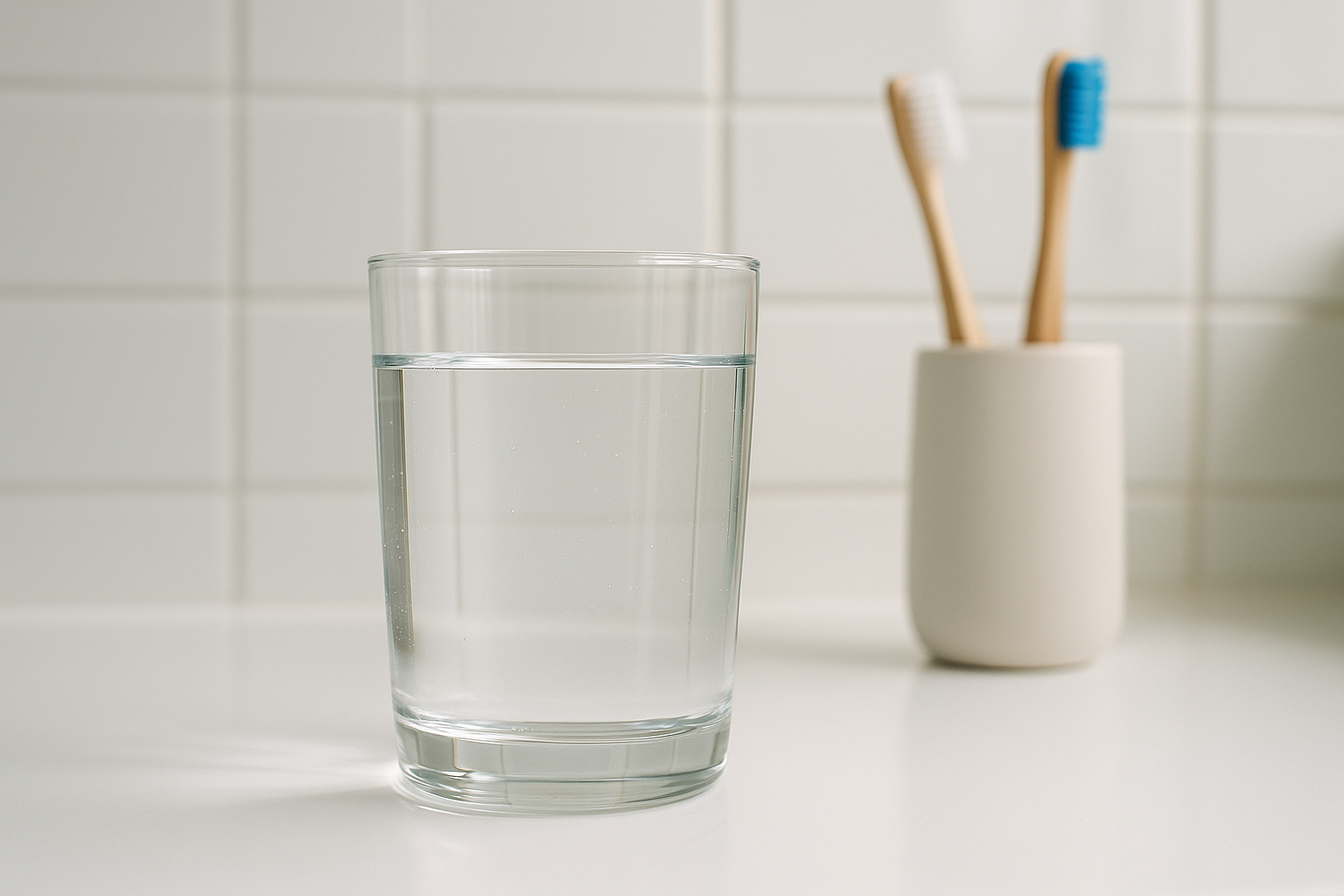
In recent years, more people have started exploring fluoride-free toothpastes and natural alternatives such as hydroxyapatite toothpaste. Brands like ORL and Gutology have become popular options for those seeking a more minimalist or natural approach to daily oral care.
These can be suitable for some - particularly those at low risk of decay or who prefer to avoid certain ingredients - but it’s important to understand how non-fluoridated oral care products differ from traditional fluoride toothpaste. Making an informed choice means recognising both the benefits and the potential downsides of going fluoride-free.
If you prefer a fluoride-free routine, choose products that include hydroxyapatite, which has been shown to support enamel remineralisation and reduce sensitivity. Pair it with excellent brushing technique, daily flossing, and regular hygiene visits.
And if you’re unsure whether your local water supply already contains fluoride (many parts of the UK, including much of London, don’t), you can check using an official “fluoride in water UK” postcode tool or simply ask your dentist.
At Foxley Lane Dental, we’re here to guide you - not persuade you. Whether you choose fluoride or fluoride-free oral care, our goal is to help you protect your smile confidently and safely.
For advice tailored to your unique needs, we recommend consulting dental professionals who can help you select the most appropriate oral care products.

Still not sure?
Let’s look at your smile, chat through your preferences, and create a tailored dental care plan together that’s right for you.
Looking for a Purley dentist or Croydon dentist who’ll give clear, friendly advice on fluoride toothpaste, fluoride mouth rinses, fluoride varnishes, and hydroxyapatite toothpaste?
At Foxley Lane Dental in Purley, we care for patients across Croydon, South London, Selsdon, Coulsdon, Wallington, Addington and New Addington. Whether you prefer fluoride or fluoride-free options, we’ll tailor a plan that fits your smile, lifestyle and goals.
Yes - when used in recommended amounts, fluoride is very safe. It’s a naturally occurring mineral that’s been studied for over 70 years and remains one of the most effective tools in preventing dental caries. Both the NHS and the wider dental profession agree that the benefits of fluoride for oral health far outweigh any risks. Regular use of fluoride toothpaste, fluoride mouth rinses, or fluoride varnishes can significantly reduce the risk of dental decay. The fluoride concentration in toothpaste and fluoridated water is carefully controlled to ensure safety for children and adults alike. When used properly - brushing twice daily and spitting, not swallowing - fluoride helps to remineralise tooth enamel and prevent acid attacks that lead to cavities. Excessive exposure is rare, but in very high doses, fluoride can lead to mild cosmetic changes such as dental fluorosis (fine pearly white lines on enamel). These are harmless and purely aesthetic. Used correctly, fluoride remains a cornerstone of public health dentistry and chronic disease prevention across the world.
Absolutely - many patients combine fluoride toothpaste and hydroxyapatite toothpaste for maximum caries prevention. Fluoride helps to strengthen enamel and reduce bacteria in the oral cavity, while hydroxyapatite - the same naturally occurring mineral found in teeth and bone - fills microscopic imperfections and smooths tooth surfaces. For instance, you might use a fluoridated toothpaste in the morning and a hydroxyapatite one at night, or alternate between the two. This can help reduce tooth sensitivity while maintaining effective fluoride levels for everyday oral health. Your dentist can help you find the right amount of fluoride and schedule for your unique needs. Many people also benefit from adding fluoride mouth rinses or periodic fluoride varnishes, especially if you have a higher risk of dental decay, gum disease, or dry mouth.
Prescription fluoride toothpaste (2,800 ppm or 5,000 ppm fluoride concentration) is ideal for people with a higher risk of developing dental caries or enamel erosion. It’s often recommended by dental professionals if you have multiple cavities or fillings, gum recession or exposed roots, orthodontic appliances, reduced saliva flow or dry mouth, or are frequently snacking and drinking sugary drinks. The higher fluoride concentration strengthens weakened enamel, reverses early decay and helps protect against future acid attacks. It’s safe when used as directed: just a pea-sized amount twice a day, spitting afterwards but not rinsing. Your dentist may also recommend combining this with fluoride mouth rinses or fluoride varnishes for even better results. These treatments are proven in community dentistry and dental research to reduce decay across all age groups.
A fluoride mouth rinse (or fluoride mouthwash) can be a good addition to your routine, but is certainly not essential. It offers a quick way to refresh your mouth and boost fluoride levels between brushes. Fluoride mouth rinses are especially useful for people prone to dental decay, gum disease, or wearing orthodontic appliances. Use your fluoride mouthwash at a different time of day to brushing - perhaps after lunch or before bed - so it doesn’t rinse away the concentrated fluoride in toothpaste. When used regularly, fluoride mouth rinses support caries prevention and help keep both primary teeth and permanent teeth strong. Combined with regular fluoride varnishes and fluoridated toothpaste, this approach offers one of the best defences against cavities recommended in modern community water fluoridation programmes worldwide.
Some areas of the UK have fluoridated drinking water, while others don’t. Around 10% of the population benefits from community water fluoridation, where fluoride levels are adjusted to around one part per million (1 ppm) - the ideal fluoride concentration for effective caries prevention. This small, safe amount of fluoride in drinking water helps strengthen enamel from within and reduce decay across entire communities. Even where tap water isn’t fluoridated, brushing with fluoride toothpaste and using mouth rinses keeps protection levels high. If you’re curious about how much fluoride is in your local water supply, you can check with your provider or online using a postcode tool. Your dentist can then tailor your care plan, recommending the right combination of fluoride varnishes, fluoridated toothpaste, and home care for your local conditions.
Yes - hydroxyapatite toothpaste is safe for children, but the NHS still recommends fluoride toothpaste as the best proven way to protect developing teeth. Fluoride supports tooth development, strengthens new enamel, and prevents baby teeth and permanent teeth from decay. For children under 3, use a smear of fluoride toothpaste with at least 1,000 ppm fluoride concentration; from 3–6 years, a pea-sized amount (1,000–1,500 ppm); and from 7 years onward, a regular fluoridated toothpaste containing 1,350–1,500 ppm. Supervise brushing to ensure they spit, not swallow, and don’t rinse afterwards so the fluoride can continue working. Children at higher risk of decay may also benefit from fluoride varnishes or professional treatments, which deposit extra fluoride on the enamel surface to enhance protection. Hydroxyapatite toothpastes can complement this care but shouldn’t replace fluoride entirely unless advised by your dentist.
The NHS fluoride guidelines are clear and based on decades of dental research and public health dentistry evidence. The NHS recommends brushing twice daily with fluoride toothpaste as the simplest and most effective method of preventing dental caries. Ages 0–3 should use a smear of toothpaste with at least 1,000 ppm fluoride. Ages 3–6 should use a pea-sized amount with 1,000–1,500 ppm fluoride. Ages 7 and above should brush with 1,350–1,500 ppm fluoride toothpaste. High-risk patients may receive fluoride varnishes, fluoride mouth rinses, or prescription-strength toothpaste (2,800–5,000 ppm). Children should always be supervised to prevent swallowing and to ensure the right amount of fluoride is applied. Professional fluoride varnishes can be given 2–4 times a year to further reduce the risk of dental decay. Together, these steps - along with good diet and regular check-ups - form the foundation of the NHS’s evidence-based caries prevention programme, supporting stronger smiles through balanced fluoride exposure and good oral health habits.

For composite bonding, dental implants, veneers, teeth straightening and teeth whitening:

For children's appointments, dental check-ups, dental hygiene and emergency appointments:



I couldn’t have asked for better treatment. Highly recommended. I am a very happy patient!
Bridget butcher


Excellent care and attention with very experienced dentists and efficient reception with all the latest modern equipment one would hope for. Highly recommend.
anthony carter-clout


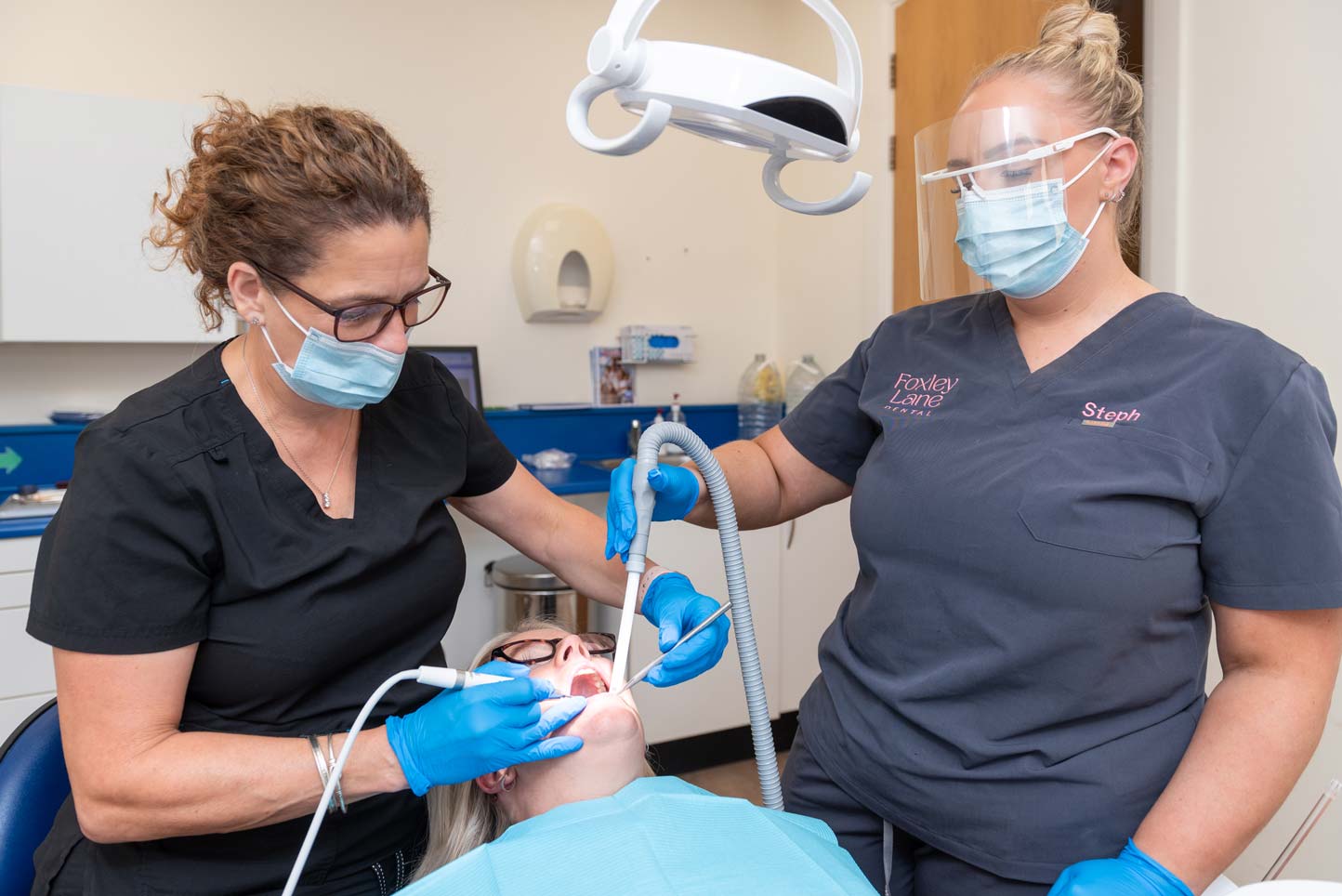

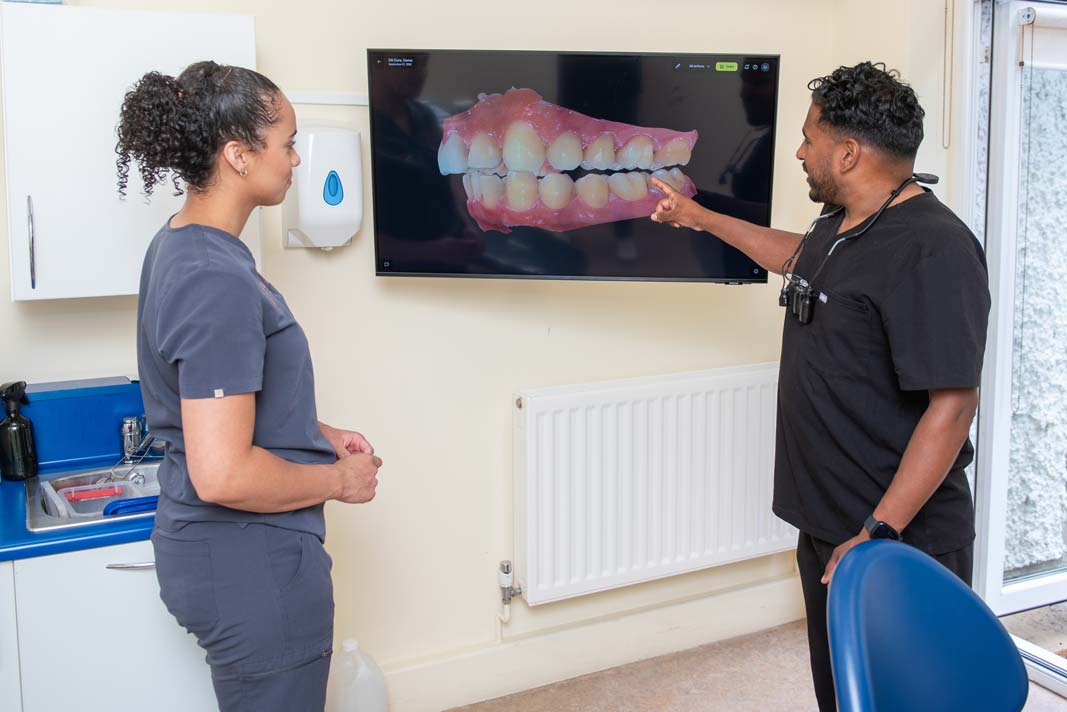


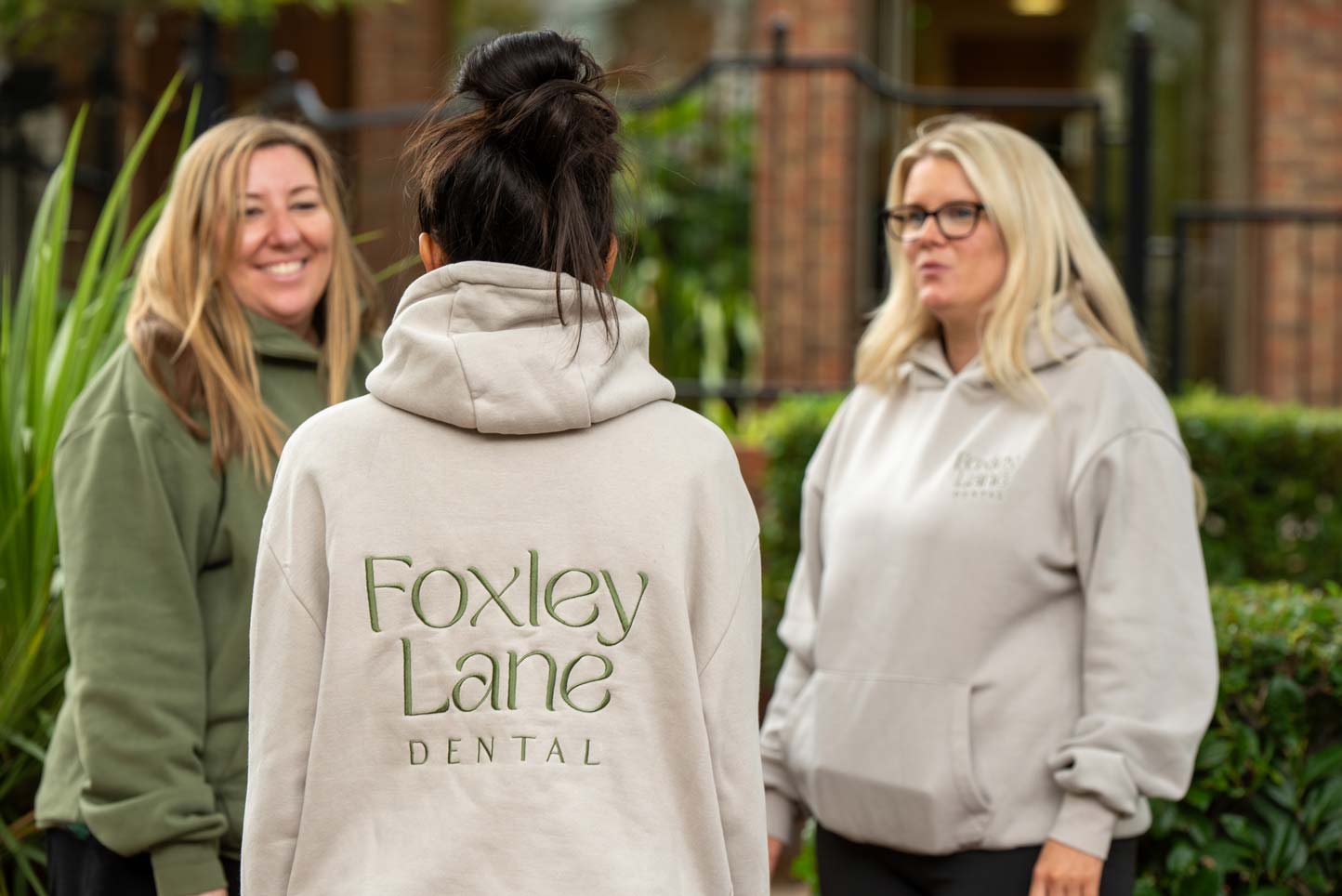
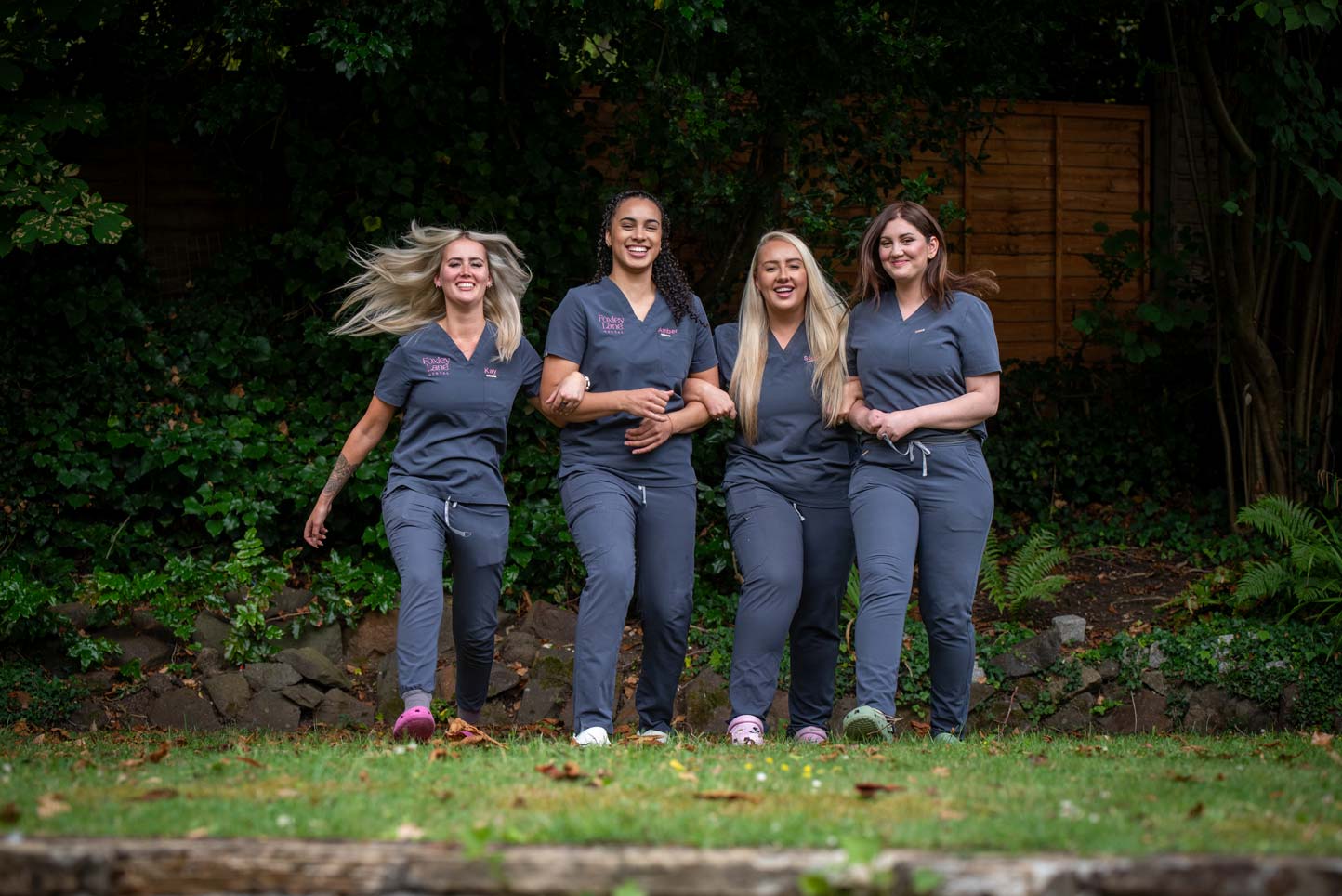

Monday
8.30am - 5.00pm
Tuesday
8.30am - 5.00pm
Wednesday
8.30am - 8.00pm
Thursday
8.30am - 5.00pm
Friday
8:30am - 4.00pm
Saturday
9.00am - 2.00pm
Sunday
Closed



